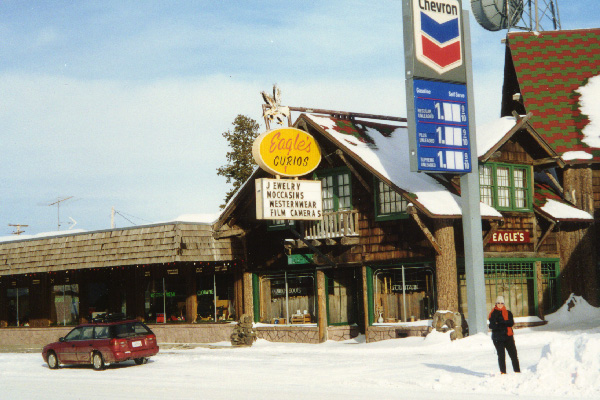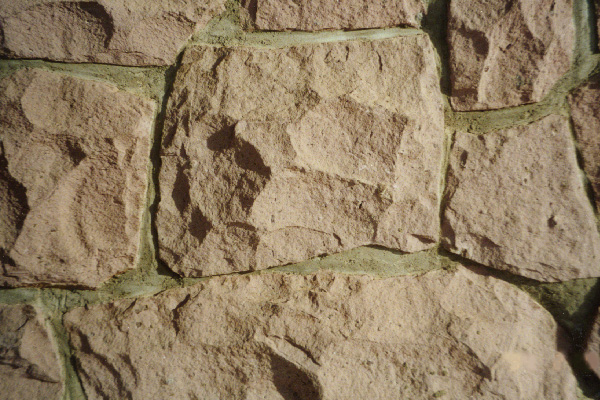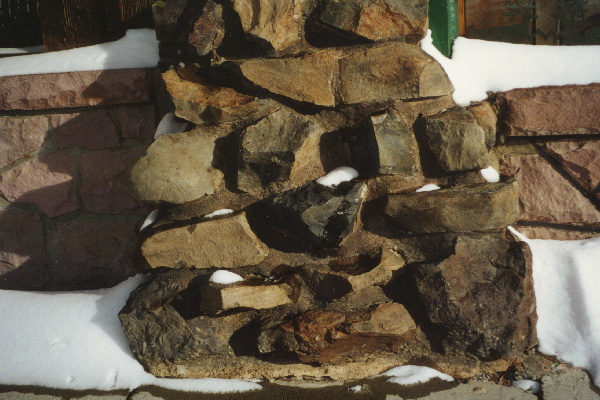
The lower walls are built of rhyolite (see below), with buttresses of basalt (farther below). Rhyolite is a silica-rich volcanic rock, and basalt is a magnesium-rich silica-poor volcanic rock. Those rocks are entirely appropriate, because Yellowstone is a region of rhyolitic volcanic activity with a history of spectacular eruptions. It sits at the northeast end of a track of basaltic eruptions that make up the Snake River Plain across southern Idaho. The traditional explanation of that configuration is that Yellowstone sits over a hot spot, an upward-flowing plume of magma from the mantle. According to that view, North America has drifted west-southwest over the hotspot, so that the basalts of southern Idaho provide a record of plate tectonic movement. The basalts are oldest to the southwest and younger to the northeast. The rhyolite used in the Eagle store almost certainly came from the Yellowstone area, where volcanism has been active in the last million years and where geysers are heated by the Earth's spectacular output of heat today.

